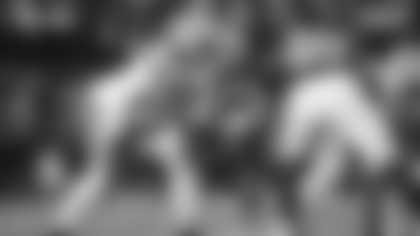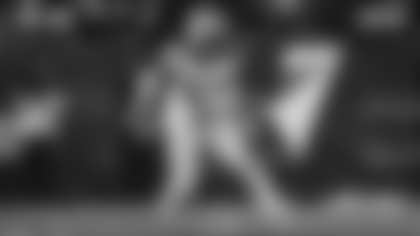Lambeau Field is an incredibly historic place, but there's so much more history to the Packers than the 55-year-old stadium.
I always knew that, but it was almost overwhelming to process the depth of this team's history on Thursday when I walked the downtown portion of the Packers Heritage Trail. (For a photo gallery of the journey, click here.) The record-setting 100-plus heat index was overwhelming, too, but gaining a more thorough understanding of how town and team became so intertwined still carried the day.
These days, the franchise's connection to its fans is evident in the shareholder meetings and tailgate parties, the players riding kids' bikes to practice, and events like Family Night, when 60,000 folks show up to watch the team scrimmage. Notice how all of those things are associated with Lambeau Field.
But the current stadium wasn't around for the first 38 years of the team's existence, and it's easy to forget that. Perusing the 14 downtown Heritage Trail plaques that are all within a roughly 15-square-block area – in the interest of health and safety, I decided to save the rest of the trail, including trips to old City Stadium, the Packing Plant Spur and the Lambeau-Lombardi spur, for a cooler day – helped it all make more sense.
The sheer number of major buildings downtown with historic connections to the Packers helps explain how the city and the team attached to one another in the early years. Not to discount the "publicly owned" element, but if a city in the first half of the 20th century was defined by its downtown and the happenings there, it's easy to see how its citizens became devoted to their team.
I won't spoil all the interesting nuggets to be gleaned from making the walk and reading the plaques. But looking around at two old train depots – where musical bands and throngs of fans, numbering in the thousands, would send the team off on road trips and welcome them home from triumphs – provides quite the perspective.
So does standing outside a building where fans gathered in the 1920s to follow the play-by-play of games via telegraph wire, before they were broadcast on radio.
Two locations on the trail are places Curly Lambeau worked other jobs while playing for and coaching the Packers, and two others were sites of meetings surrounding the turmoil of Lambeau's ugly departure in 1949. Within a few paces here and there, it was impossible not to be struck by how different a bygone era can be, and yet how history has a way of repeating itself.
There are plenty of spots that provide a peek into the Lombardi era, too, after the construction of "new" City Stadium. The team certainly didn't leave downtown when the stadium that's now Lambeau Field was built, as the Heritage Trail marks locations where Lombardi held press conferences and was presented with his first league title trophy, among other interesting spots.
The transition to the stadium fully housing the entire franchise was a couple of decades in the making. Learning that, it was grasping the importance of the city's downtown as it related to the team in the early years that most fascinated me.
Green Bay's movers and shakers had their offices near the river and exerted their influence over the town's economy and its football team within the same sets of walls. Meanwhile the citizens walking those very streets took to the team as their own, financially and otherwise, and that part hasn't changed, no matter where the games are played.
So thanks, Heritage Trail. The foundation of the "connection" referenced so often with this franchise is made real by the descriptions on those buildings that are nowhere near my desk. I'm sure the depth of my understanding would only grow if I read all the plaques again, even if I were to brave a below-zero day next time.
For a photo gallery, click here.















